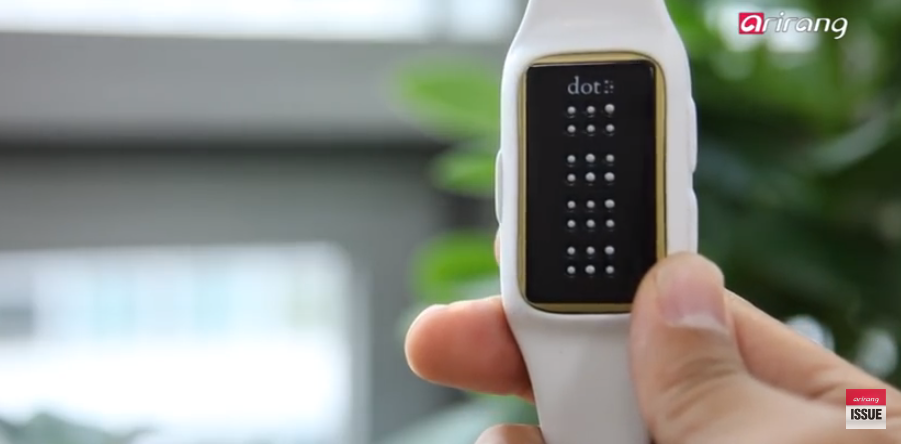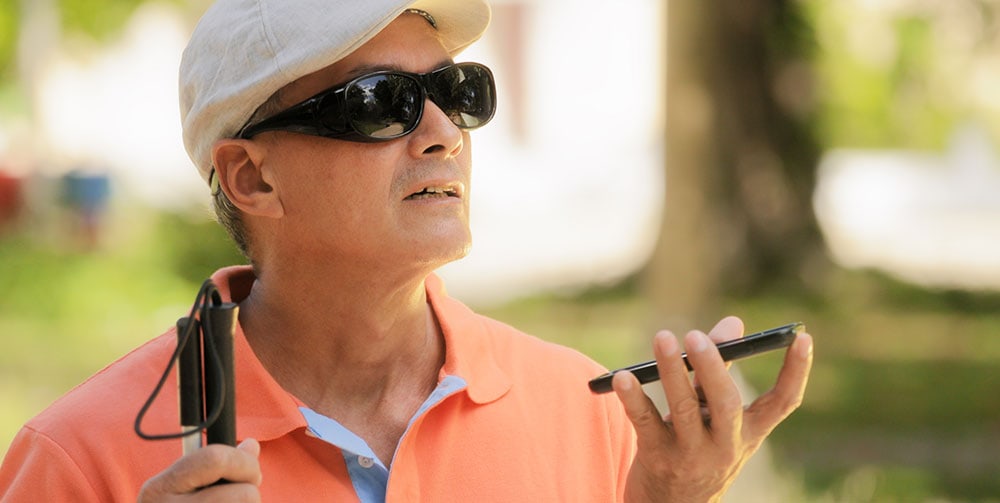AI-Powered Visual Aids: Enhancing Self-Reliance for Blind Users
AI-Powered Visual Aids: Enhancing Self-Reliance for Blind Users
Blog Article
Discover Ingenious Devices Developed for the Aesthetically Damaged
The development of innovative tools for the visually impaired stands for a substantial development in accessibility and self-reliance. Technologies such as smart glasses with AI capabilities and mobile applications designed to give auditory descriptions are improving day-to-day experiences for users. Furthermore, wearable devices that employ haptic comments boost ecological awareness, while contemporary Braille advancements supply new ways to involve with text. As these tools continue to evolve, their effect on the lives of those with aesthetic impairments elevates important questions regarding the future of inclusivity and freedom in numerous facets of life. What lies ahead in this technological landscape?
Smart Glasses for Navigating

Smart glasses created for navigation are reinventing the way visually damaged individuals connect with their atmosphere. These advanced gadgets utilize a mix of video camera innovation, expert system, and acoustic comments to supply real-time details regarding surroundings. By using challenge detection systems, clever glasses can notify users to potential hazards, allowing safer wheelchair in both familiar and unfamiliar settings.
The assimilation of GPS modern technology better boosts navigating capacities, enabling customers to get auditory directions as they move. This hands-free approach not only promotes freedom but also encourages aesthetically damaged individuals to browse metropolitan landscapes with enhanced confidence. Furthermore, several clever glasses are outfitted with functions that recognize sites and street indicators, providing contextual details that enhances the individual experience.
Furthermore, the development of these tools is consistently advancing, with business functioning to improve the accuracy of object recognition and increase the variety of navigational features. As clever glasses end up being much more available and cost effective, they hold the possible to considerably transform life for aesthetically damaged users. Ultimately, these cutting-edge tools represent an important step toward inclusivity, offering boosted flexibility and a higher sense of autonomy for individuals navigating the world around them.

Mobile Apps for Daily Living
How can mobile applications improve the day-to-day lives of aesthetically impaired people? Mobile applications are revolutionizing the means visually damaged individuals navigate their atmospheres, handle daily tasks, and accessibility details. These applications supply crucial assistance with different functionalities, promoting self-reliance and boosting lifestyle.
A number of innovative mobile apps are created specifically for daily living. For example, applications like Be My Eyes link aesthetically damaged individuals with sighted volunteers through video phone calls, enabling them to receive real-time help with tasks such as reading labels or navigating strange areas. Seeing AI, created by Microsoft, makes use of synthetic intelligence to define environments, checked out text, and identify items, efficiently transforming a smart device right into an effective tool for day-to-day help.
Additionally, navigating applications customized for the visually impaired, such as Aira and BlindSquare, supply audio-based directions and ecological information, allowing users to traverse their environments securely and confidently. Beyond navigating and immediate assistance, mobile applications likewise sustain company and task monitoring, with attributes that help customers set suggestions, develop to-do lists, and track consultations. In summary, mobile applications serve as important resources, equipping aesthetically damaged individuals to lead more independent and meeting lives.
Wearable Technologies for Assistance
Empowerment through innovation is increasingly noticeable in the world of wearable tools created to assist aesthetically impaired individuals. These innovative devices integrate flawlessly right into day-to-day live, enhancing navigation and supplying crucial feedback to customers. For example, smart glasses equipped with electronic cameras can check out and identify faces message out loud, allowing individuals to connect more with confidence in social and expert settings.
Another notable improvement is making use of haptic responses systems in wearable tools. These systems use vibrations or various other responsive signals to convey details concerning the customer's environment, such as barriers or modifications in surface, improving wheelchair and safety and security. Wearable technologies likewise include wristbands that link to smartphones, signaling customers to notifications through subtle vibrations, therefore enhancing connection without reliance on aesthetic signs.
As these technologies continue to develop, they are not only enhancing independence for visually impaired people yet likewise cultivating a higher sense of addition in culture. By bridging the void between obstacles encountered in daily living and the potential for freedom, wearable modern technologies act as pivotal devices in the mission for equal rights and empowerment for those with visual problems.
Sound Summary Devices
Audio description tools play a critical role in improving ease of access for visually damaged people, providing them with the capability to engage with visual media. Assistive technology for the blind. These tools offer narrated descriptions of crucial aesthetic elements in movies, tv shows, and live performances, ensuring that customers can fully understand the context and emotions shared via visuals
Sound description can be incorporated right into various systems, consisting of streaming services, movie theater testings, and live theater. Lots of preferred streaming solutions now consist of audio description as an availability feature, permitting customers to choose it quickly. In addition to mainstream media, specialized applications additionally exist, providing audio descriptions for art exhibitions, galleries, and various other cultural occasions.
The performance of audio description depends upon the ability of the storytellers, who must communicate blog aesthetic information succinctly without diminishing the original audio. Advancements in this field are also leading the way for even more individualized experiences, where users can adjust the degree of detail and pacing according to their preferences.
Braille Innovations and Devices
Braille advancements and tools have dramatically transformed the way aesthetically impaired people engage with message and information. Modern developments have led to the advancement of versatile tools that enhance literacy and independence among customers. Notably, Braille display innovations have actually progressed, permitting dynamic analysis experiences. These devices convert electronic text right into Braille, allowing customers to access a large selection of info on computer systems, smartphones, and tablet computers.
Furthermore, portable Braille notetakers combine conventional Braille input with modern performances, assisting in note-taking, organizing, and paper editing and enhancing on the move. Speech-to-text devices for low vision. These portable tools often feature text-to-speech capacities, linking the space between Braille and auditory information
In addition, ingenious Braille printers have arised, permitting individuals to produce Braille labels, records, and instructional products effectively. This ease of access fosters better involvement in specialist and instructional atmospheres, ultimately advertising inclusivity.
Moreover, research right into wise Braille technologies remains to expand. Instruments that integrate man-made intelligence are being discovered to supply real-time navigation assistance and contextual details, improving the user experience in varied settings. Generally, these developments reflect a dedication to equipping visually damaged people with technology, ensuring they can conveniently gain access to Read Full Article and engage with the globe around them.

Final Thought
The improvement of cutting-edge devices for the aesthetically impaired substantially improves independence and lifestyle. Smart glasses, mobile applications, wearable technologies, audio summary tools, and Braille innovations collectively equip individuals by offering vital navigation assistance, ecological understanding, and enhanced analysis experiences. These technologies not only foster better addition however likewise advertise freedom in day-to-day tasks, inevitably adding to an extra fair and available culture for aesthetically impaired people. Continued growth in this area holds guarantee for further enhancements.
As wise glasses come to be more easily accessible and affordable, they hold the possible to significantly change day-to-day life for aesthetically impaired users. Mobile apps are changing the means visually impaired individuals browse their settings, manage daily tasks, and gain access to details. Applications like Be My Eyes attach visually impaired individuals with sighted volunteers by means of video clip telephone calls, allowing them to receive real-time support with tasks such as reviewing tags or browsing strange spaces.Additionally, navigation apps tailored for the visually impaired, such as Aira and BlindSquare, provide audio-based directions and environmental information, allowing individuals to traverse their surroundings safely and confidently.The development of ingenious tools for the visually impaired substantially improves self-reliance and high quality of review life.
Report this page